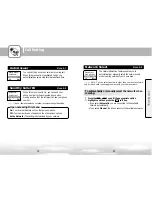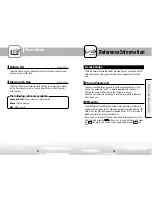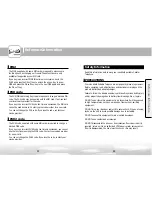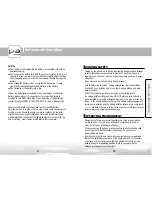
Reference Information
AIRCRAFT
FCC regulations prohibit using your phone while in the air. Turn your
phone OFF before boarding an aircraft. Always request and obtain prior
consent and approval of an authorized airline representative before using
your phone aboard an aircraft. Always follow the instructions of the
airline representative whenever using your phone aboard an aircraft,
to prevent any possible interference with airborne electronic equipment.
Reference Information
POTENTIALLY EXPLOSIVE ATMOSPHERES
Turn your phone OFF when in any area with a potentially explosive
atmosphere and obey all signs and instructions. Sparks in such areas
could cause an explosion or fire resulting in bodily injury or even death.
Areas with a potentially explosive atmosphere are often, but not always,
clearly marked. They include fueling areas such as gas stations; below
deck on boats; fuel or chemical transfer or storage facilities; vehicles
using liquefied petroleum gas (such as propane or butane); areas where
the air contains chemicals or articles, such as grain, dust, or metal
powders; and any other area where you would normally be advised to
turn off your vehicle’s engine.
102
101
Radio Frequency (RF) Signals
Your wireless phone is a radio transmitter and receiver.
It is designed and manufactured not to exceed the emission limits for
exposure to radio frequency (RF) energy set by the Federal
Communications Commission (FCC) of the U.S. Government. These
limits are part of comprehensive guidelines and establish permitted level
of RF energy for the general population. The guidelines are based on
the safety standards that were developed by independent scientific
organizations though periodic and through evaluation of scientific
studies studies.
The standards include a substantial safety margin designed to assure
the safety of all persons, regardless of age and health.
The exposure standard for wireless phones employs a unit of
measurement known as Specific Absorption Rate (SAR). The SAR limit
set by the FCC is 1.6W/kg.
In the U.S. and Canada, the SAR limit for mobile phones used by the
public is 1.6 watts/kg (W/kg) averaged over one gram of tissue. The
standard incorporates a substantial margin of safety to give addition
protection for the public and to account for any variations in
measurements.
SAR tests are conducted using standard operating positions specified by
the FCC with the phone transmitting at its highest certified power level
in all tested frequency bands.
Although the SAR is determined at the highest certified power level, the
actual SAR level of the phone while operating can be well below the
maximum value. This is because the phone is designed to operate at
multiple power level so as to use only the power required to reach the
network. In general, the closer you are to a wireless base station
antenna, the lower the power output of the phone.
Содержание GSM718
Страница 1: ...GSM718 GSM719 User Manual...




































